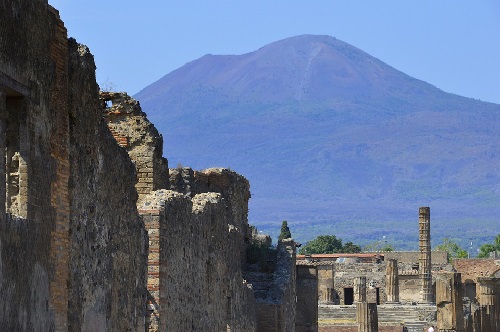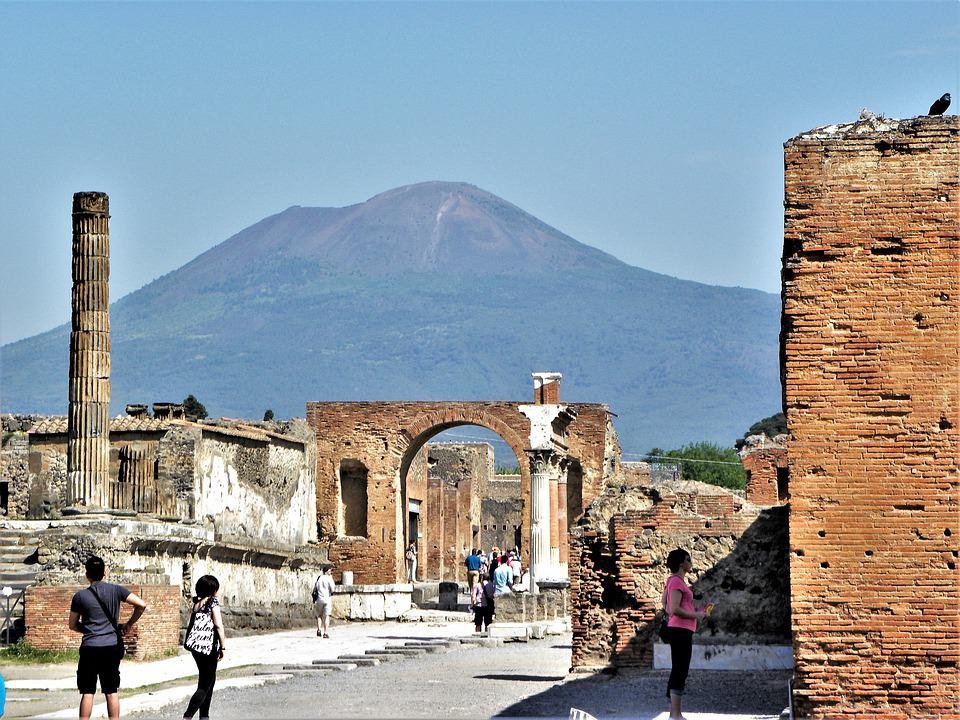What Was Pompeii? What Happened There?
Written by Vedika Pathania, a second-year student.
Located near Naples, on the Eastern shore of Italy, at the base of Mount Vesuvius, Pompeii was founded in the 8th century BCE and was initially a part of Greece but was then later ruled by Rome…
Written by Vedika Pathania, a second-year student.
When we talk of cities that went through massive excavations, which were buried somewhere within history and discovered much later, we come across names such as Harappa, Mohenjodaro, and Pompeii. To talk about what happened in this ancient city, we must first understand the basic geography and the history of the city.
Where exactly is Pompeii?
Located near Naples, on the Eastern shore of Italy, at the base of Mount Vesuvius, Pompeii was founded in the 8th century BCE and was initially a part of Greece but was then later ruled by Rome.
(Vesuvius, commonly known as Mount Vesuvius or Italian Vesuvio, is a semi-active volcano in southern Italy that rises above the Bay of Naples on the Campania plain.)
Who lived there?
In 79 CE (CE is Common Era, similar to AD), roughly 2000 years ago, Pompeii had a population of about 12,000 people. They could go to cafés, stores, bathhouses, and even a big stadium while they were there. There were many rich Roman people who lived there.
There was also an election coming up in the city. Graffiti and political messages were spray-painted on many of the neighborhood’s buildings and public spaces.
What happened at Pompeii?
A massive eruption from Mount Vesuvius spewed volcanic debris over Pompeii at midday on August 24, 79 CE, and was joined the next day by clouds of scorching hot fumes. Buildings were demolished, people were crushed or suffocated to death, and the city was buried beneath an ash and pumice layer.

Mount Vesuvius’ historic eruption in A.D. 79 destroyed the surrounding terrain as well as the people of the Roman cities that lay in its reach. Violent pyroclastic currents swept downslope after thick ash triggered deadly building collapses in Pompeii, suffocating the city, the adjacent port town of Herculaneum, and numerous other sites.
(Gravity-driven mixes of ash, lava blobs, and toxic fumes are known as pyroclastic flows. Pyroclastic surges are similar to pyroclastic flows, except they contain relatively more gas.)
But when Vesuvius erupted, it sent a cloud of ash, rock, and gas into the atmosphere. Many people in the region were forced to evacuate as a result of this. The cloud was visible from as far as a hundred miles distant. Some people in Pompeii, however, remained, unable or unwilling to escape.
Nearly everything within 15 miles of the volcano was destroyed by the eruption. 2,000 individuals were killed at Pompeii alone. Thousands more people were killed in the aftermath.
Pompeii was buried beneath millions of tonnes of ash and rock after the eruption ceased. That’s where it stayed for almost a thousand years.
The excavation
Pompeii slept for centuries under a veil of ash, which wonderfully preserved the ruins. The discovery of a sophisticated Greco-Roman metropolis trapped in time shocked the globe when they were ultimately discovered in the 1700s. In 1748, the excavation of Pompeii started.
As explorers dug deeper into the city, they discovered that most of it had been carefully preserved. The city appeared to be trapped in time, protected by the very ash that had devastated it.
The majority of its structures remained intact, with some still bearing political campaign inscriptions and other graffiti. Every day items such as ceramics and even some food were saved.
A magnificent forum and an amphitheater were discovered, as well as luxurious villas and other types of dwellings dating back to the 4th century BCE. There were some preserved bones of individuals who had sought refuge from the eruption; some had been buried as they fled; bakeries were discovered with bread still baking.
The structures and their contents revealed daily life in the ancient world, and sparked a revival of interest in all things classical.
Pompeii today
Archaeologists are still excavating the ruins of Pompeii today. They do, however, have the difficulty of preserving the city’s ruins when they discover them. Natural disasters, severe weather, and large crowds of tourists can all pose a threat to the site. Protective measures, on the other hand, have made a significant effect in recent years.

Around a third of Pompeii is still buried today. The section of the city that has been uncovered is heavily guarded, although visitors are welcome. The city was designated as a UNESCO world historic site in 1997, giving it even greater protection.
Mount Vesuvius, which is only a few miles distant, is also still active. Since 79 CE, it has erupted many times, the most recent one being in March 1944.
Key points summary
- Pompeii was founded in the 8th century BCE and was initially a part of Greece but was then later ruled by Rome.
- In 79 CE (CE is Common Era, similar to AD), roughly 2000 years ago, Pompeii had a population of about 12,000 people
- A massive eruption from Mount Vesuvius spewed volcanic debris over Pompeii at midday on August 24, 79 CE, and was joined the next day by clouds of scorching hot fumes.
- Buildings were demolished, people were crushed or suffocated to death, and the city was buried beneath an ash and pumice layer
- Many people in the region were forced to evacuate as a result of this.
- Nearly everything within 15 miles of the volcano was destroyed by the eruption. 2,000 individuals were killed at Pompeii alone. Thousands more people killed in the aftermath.
- In 1748, the excavation of Pompeii started.
- A magnificent forum and an amphitheatre were discovered, as well as luxurious villas and other types of dwellings dating back to the 4th century BCE
- The structures and their contents revealed daily life in the ancient world, and sparked a revival of interest in all things classical.
- Archaeologists are still excavating the ruins of Pompeii today
- The city was designated as a UNESCO world historic site in 1997, giving it even greater protection.
- Mount Vesuvius is also still active. Since 79 CE, it has erupted many times, the most recent one being in March 1944.
I Kid You Not now has a large readership across India and also parts of the world. If you want to write for us, you can submit your story here. You can also apply to become a news anchor. Apply here



Comments